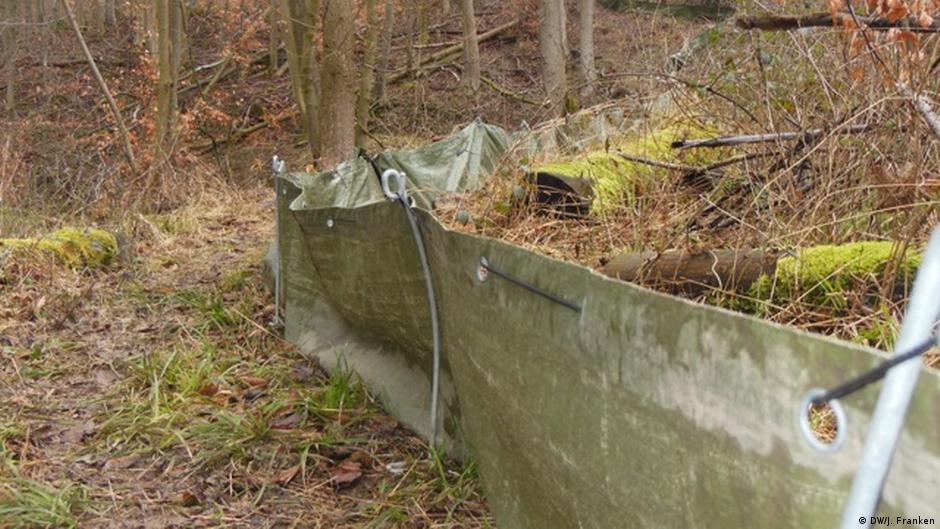The Road With a Toad-Away Zone
Say you were going on a date, meeting up with your potential new partner at a restaurant a mile or so away. Unless you live in a place with a good public transportation system or a city with a bicycling culture, chances are you’re going to drive there. And that requires roads. But for the non-humans out there, where they’re going, they don’t need roads. In fact, roads can be downright harmful for them. Most land-based animals walk or hop their way to their breeding grounds, and crossing a road to get there means putting their lives at risk.
Which is why these exist.

The image above, via DW.com, is just a green sheet of canvas or something or other, tied to stakes about a half-meter (about a foot and a half) high and spanning about 800 meters (half a mile). It’s really nothing special, in and of itself. But deployed correctly, it can save tens of thousands of toads.
Each year, toads and other amphibians in Germany “travel up to two kilometers [1.25 miles] to reach their breeding ponds,” according to Andreas Krone of the German Nature Protection Association (via TheLocal.de). And that path, often, passed through the same places cars go. When toads cross streets at the same time as our motor vehicles, the toads tend to lose. And as more and more toads perish on their way to the place where they make new toads, well, that’s not going to be good for the toad population. Monika Hachtel, the deputy director of a German NGO focused on conservation, told DW.com that “sometimes the whole population is killed by cars.”
The solution? Shutting down the roads during toad breeding season isn’t realistic, and there are only so many ways you can teach toads road safety. Some communities build toad tunnels, like the one seen here, which literally aim to funnel the toads into a safe path under the danger. Those, per DW, “are usually done when new roads are built,” but aren’t as viable for existing roads. The fence above, though, can make a difference. The fence is high enough where toads and other amphibians can’t hop over it; instead, they have to mosey along until they can find their way around.
And before that happens, the second phase of the toad fencing takes over. As seen here, conservationists place buckets every three to five meters. Toads, not really understanding buckets any more than they understand roadways, often fall into the buckets and get trapped. That’s where the third step of the process takes over: people. TheLocal continues: “these buckets are attended at least once a day by the volunteers, who carefully take the amphibians across the road so they can continue their journey.” (Per one site, volunteers are instructed to “wear reflective clothing and carry a torch” so they, like the toads, are not hit by cars either.) It’s not uncommon for a section of toad fencing to enbucket (that’s not a word, but it should be) 500 or so toads a day.
In total, these fence-bucket combos “save at least half a million toads, frogs and newts each year,” per Krone. It’s a low-tech way to keep the amphibian population thriving — and the roadways safe for trucks and toads alike.
Bonus fact: If you speak English (and if you’re reading this, you probably do), and someone asks you to evaluate two things which aren’t all that related, you may say “that’s like comparing apples to oranges.” That’s a strange idiom, though, as one can rather easily compare apples to oranges; both are fruits, but obviously have a lot of differences beyond that. If you speak Serbian, you have a better commonly-used phrase: “Поредити бабе и жабе.” That translates to “compare grandmothers to toads.”
From the Archives: Why Did the Crab Cross the Road?: A similar problem — and solution — as the above.
